
The Drake equation

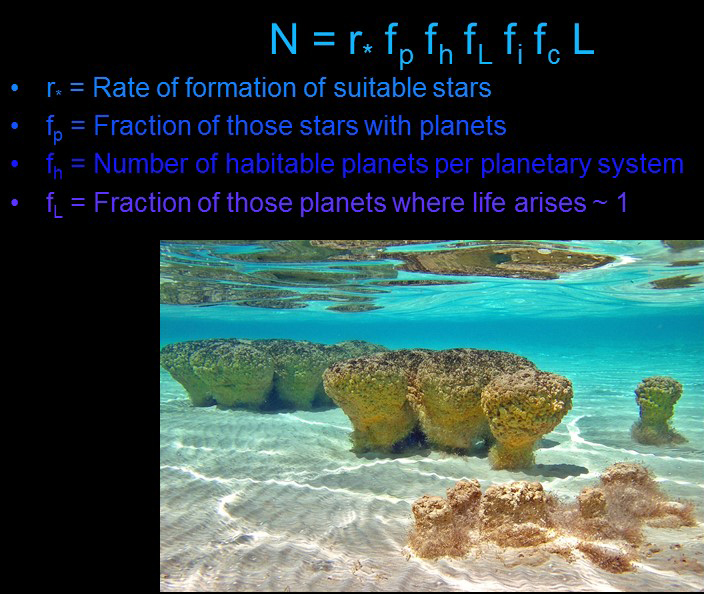
Drake's equation then multiplies the number of planets in the habitable zones of stars by the fraction of those planets where life actually arises. In this estimate, we have assumed a fraction of 1, meaning that if life could evolve, it did. Of course, we are only making a very rough estimate, since we really do not know.
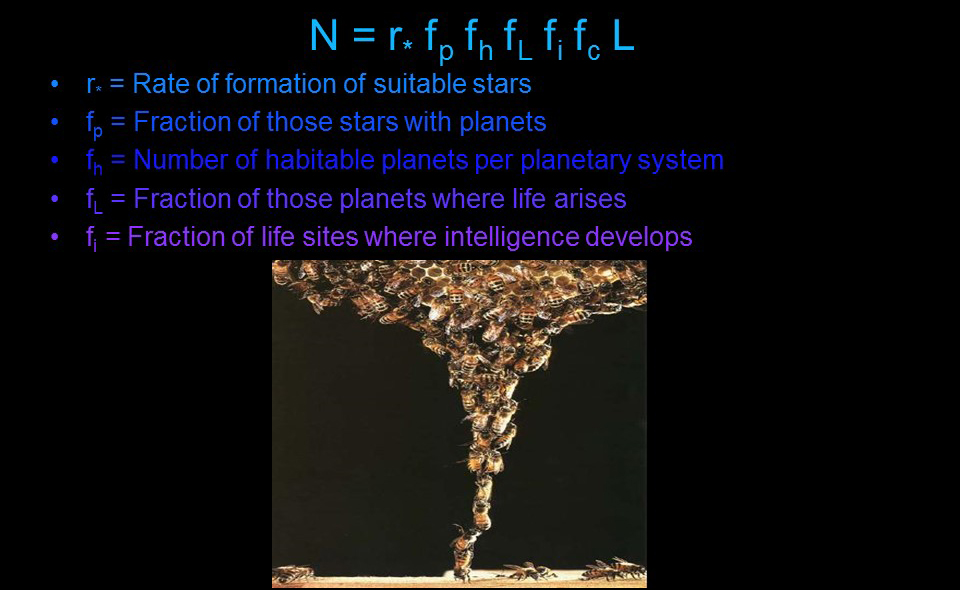
The next factor in Drake's equation is the fraction of life sites where the life develops intelligence. As illustrated here, the intelligence could be very rudimentary.
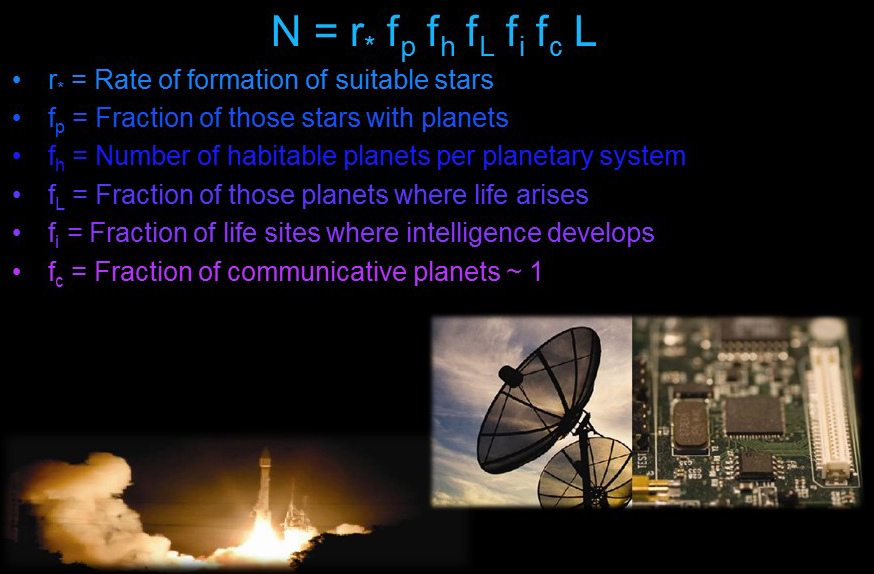
We then narrow down the number by fractions where intelligent life emerges, and develops technology enabling interstellar communication.
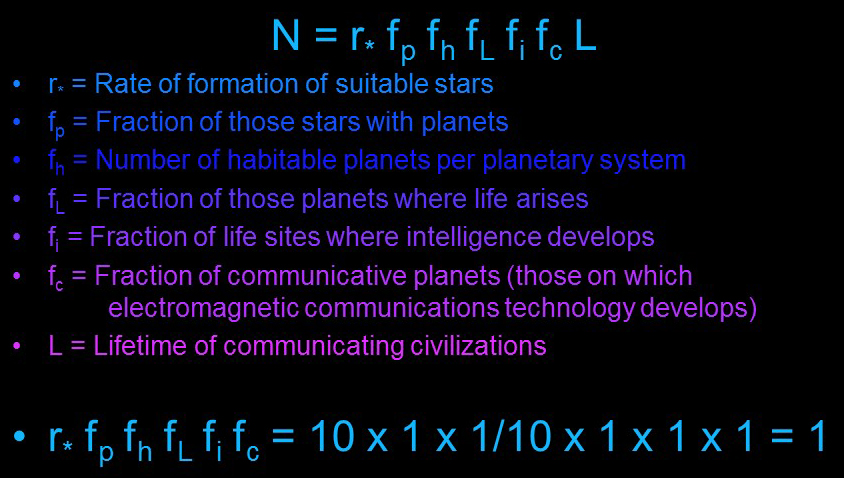
By Drake's estimate, the factors leading up to, but not including the lifetime of communicating civilizations, multiplies out to be about 1. This means that the lifetime of civilizations is paramount in determining how many civilizations exist in our galaxy.
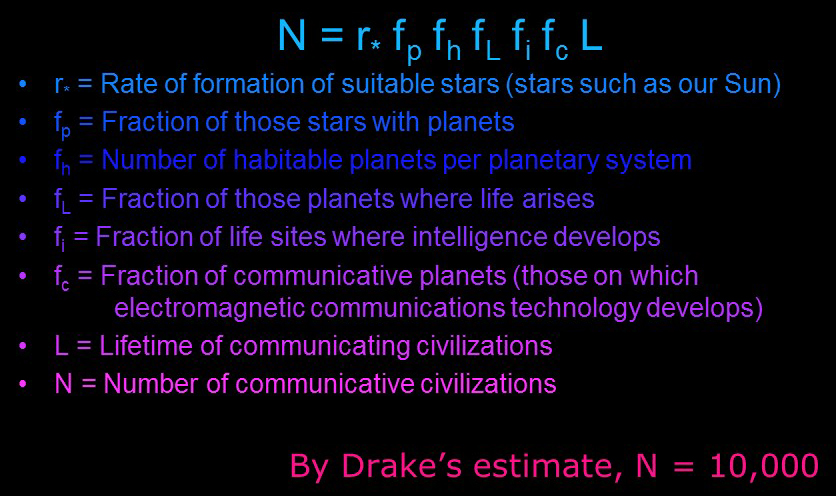
By Drake's estimate, the lifetime of a communicative civilization is 10,000 years. This number is very subjective, and some people would estimate it to be smaller or even very much larger. Using a factor of 10,000 years means that there would be an estimated ten thousand communicative civilizations in our galaxy as of now.
SETI

The Search for ExtraTerrestrial Intelligence project (SETI) actively searches for extrasolar intelligent life, with a wider interesting in understanding life in the universe. They use a large number of small dish radio telescopes to monitor the sky for transmissions that could be intelligent in origin.
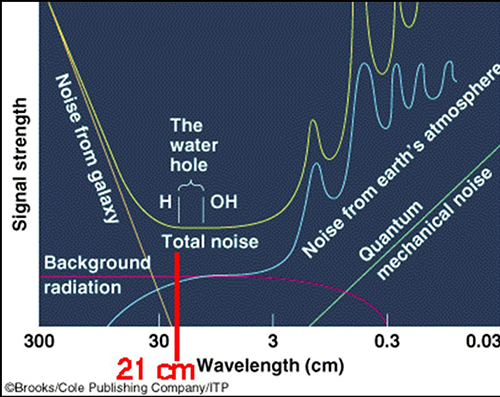
Scanning all frequencies of light for communication signals is a huge task. Some researchers believe that they may have more luck watching for signals in the "water hole" between 18 and 21 cm wavelength. The background noise from the galaxy is low here, and noise from our atmosphere is also rather low.

Voyager 1 is now 8.7 billion miles from sun, on its way out of the solar system, while Pioneer 10 and Pioneer 11 were launched even earlier. These early probes carried greeting messages, in several forms, to communicate with any alien race that they happened to encounter.

Voyager's Golden Record was something of a time capsule from Earth, carrying a collection of images and sounds, as well as directions for how to play the record. The diverging rays at the bottom left convey a map of the sun with respect to the nearest stars. The record contains greetings spoken in 55 languages, as well as a 90 minute selection of music. Images on the golden record can be found here. Recorded sounds from the golden record can be accessed here.

The theme of intelligent alien life has found a huge audience among people on Earth, with many favorite characters like Yoda, personifying our ideas of what beings from space might be like. We often picture extraterrestrial beings as having basic traits similar to humans, such as bipedal locomotion, binocular vision, etc.

While not as remarkable as Yoda, some scientists have suggested that extremophiles found on Earth could possibly have come from outer space. Case is point is the tardigrade, or water bear. These creatures are tiny, measuring 0.05 - 1.2 mm long. They live in puddles of water. When the puddle dries up, they curl up and dessicate, covering themselves with glassy molecules and go into a state of suspended animation. They are blown away with the dust, coming back to life when rehydrated. They can freeze and thaw and return to life, withstanding temperatures from -300°F to 400°F. They have been found such varied places as mountaintops at 20 thousand feet, the bottom of the ocean, in hot and cold locations such as hot springs and Antarctica.
In 2007, thousands of tardigrades were blasted into space on a satellite. After the satellite returned to Earth, it was found that many survived and had even laid eggs that hatched into healthy young. Fossil tardigrades have been found dating back 500 million years.
The Drake equation was developed in 1961 by American astronomer Frank Drake, as a method for calculating the probability of finding extrasolar life in our galaxy. The number of intelligent civilizations (N) is calculated by first estimating the formation rate of stars (r) and then multiplying by the fraction of those stars that have planets and by the number of habitable planets per system. This brings up the concept of the habitable zone of a star. The habitable zone is defined as the region where the temperature is right for liquid water to exist on the surface of a terrestrial planet. As seen in the illustration above, massive, hot stars have habitable zones that are farther away from the star than smaller, cooler stars.